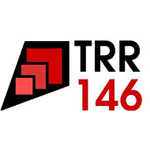
Seminar über Theorie der kondensierten Materie / TRR146 Seminar
July 31, 2012 at
1:15 p.m.
in
Newton-Raum (01-122, Bau 2.413)
F. Schmid
friederike.schmid@uni-mainz.de
P. Virnau
virnau@uni-mainz.de
L. Stelzl
lstelzl@uni-mainz.de
Current-Driven Magnetization Dynamics: Analytical Modeling and Numerical Simulation
Benjamin Krüger (Institut für Theoretische Physik, Universität Hamburg)
The magnetization dynamics in nanostructured thin films attracts much attention since such devices are candidates for new memory and logic devices. I will discuss the magnetization dynamics, driven by spin-polarized currents or magnetic fields, by means of analytical and numerical calculations. These calculations are based on the micromagnetic model in which the dynamics is given by an extended version of the Landau-Lifshitz-Gilbert equation. The investigations focus on a magnetic vortex in a thin film element and on a magnetic domain wall in a thin nanowire. From a collective coordinate approach analytical models are derived which are then compared with numerical simulations to test the applicability of the models. The analytical models are especially valuable since they can be used to predict how a change of the material parameters, the geometry of the sample, or the temporal shape of the excitation may alter the behavior of the magnetization. For the numerical calculations hitherto algorithms for micromagnetic simulations are expanded by a scheme that enables the numerical calculation of the Oersted field for arbitrary current densities.
A comparison of the analytically predicted trajectories for small harmonic excitations with the results of the numerical simulations yields good accordance. The current is able excite the magnetization via the Oersted field, the adiabatic and the non-adiabatic spin-transfer torque. The strength of the latter is still under debate. The analytical model allows for the development of a precise measurement scheme for the excitations due to all three mechanisms. The analytical model can be used to design new magnetic memory devices. In a vortex random access memory a bit is stored employing the out-of-plane magnetization in the vortex center whose orientation can be switched back and forth using excitations with magnetic fields or electric currents. When the vortex is excited by a collinear alignment of the current and the field their combined action on the vortex depends strongly on the momentary state.
This can be used for a state-dependent switching of the orientation of the vortex core. No reading operation would be needed before writing.
From an analytical model for transverse, Bloch, and Neel domain walls one finds an expression that connects the properties of the domain-wall quasiparticle, which are its mass and its damping time, with the microscopic parameters that enter the micromagnetic model. The analytical model predicts a strong reduction of the critical current density, that is needed to depin the domain wall from a pinning center, for currents with risetimes that are smaller than the characteristic damping time of the wall. This is of special importance as it should allow for efficient displacements of domain walls by fast varying currents. A comparison with experiments revealed that the predicted reduction is indeed observed. When the domain walls are close together their interaction becomes important. Their interaction energy is calculated making use of a multipole expansion. Analytical and numerical calculations show a good agreement